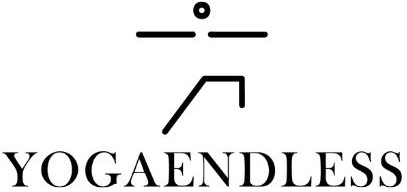Find Your Inner Strength in Stillness: Mastering Downward Dog (Adho Mukha Svanasana)

Have you ever seen a dog stretch after a nap? Tail in the air, paws forward, whole body alive with movement? That natural stretch is the inspiration behind one of yoga’s most iconic and beloved poses: Downward-Facing Dog, or in Sanskrit, Adho Mukha Svanasana.
This pose is a cornerstone in almost every yoga practice — from fiery vinyasa flows to gentle morning stretches. And while it may look simple, Downward Dog is a full-body experience that energizes, grounds, and restores.
What Is Downward-Facing Dog?
Downward Dog is an inverted V-shape pose where your hands and feet press into the mat, hips rise high, and the spine lengthens like a stretched-out ribbon.
But it’s not just a “transition” or “resting pose” — it’s a place to connect with your breath, stretch out fatigue, and build inner strength, especially for beginners learning to listen to their body.
Why Beginners Fall in Love With This Pose
It gives a full-body stretch with minimal strain
Builds upper body strength gradually
Releases tension in the back, legs, and neck
Offers calm energy and mental clarity
Helps you feel grounded, yet uplifted
Plus, it’s the perfect counter to long hours at a desk or on your phone.
How to Practice Downward Dog (Step-by-Step)
Embrace the shape. Let go of the struggle.
Start on your hands and knees in Tabletop Position.
Place your hands shoulder-width apart, fingers spread wide.
Tuck your toes under and lift your knees off the mat.
Begin to straighten your legs (it’s okay to keep them slightly bent!) and send your hips up and back.
Aim to form an inverted V with your body.
Press your palms firmly into the mat. Keep your head between your arms — ears in line with biceps.
Let your heels gently move toward the mat (no need to touch).
Breathe deeply and hold for 5–7 breaths.
Tips and Modifications for Beginners
Tight hamstrings? Bend your knees generously — it’s more important to lengthen your spine than to straighten your legs.
Use blocks under your hands if your wrists feel sensitive.
Shorter stance = easier at first. Step your feet a little closer to your hands to take off pressure.
Look back at your feet to self-correct. Are they hip-width? Are your heels pointing slightly out?
Down Dog is about feeling, not looking perfect.
Benefits of Downward Dog
Stretches the shoulders, hamstrings, calves, and spine
Builds arm and core strength
Improves blood circulation (hello, inversion!)
Calms the nervous system and relieves stress
Boosts energy and focus
Helps with posture and body awareness
This pose is like a full-body massage, but powered by your breath.
Common Mistakes to Watch Out For
Collapsing shoulders: Actively push the floor away through your palms.
Rounding the spine: Focus on lifting your tailbone high and lengthening your back.
Heels don’t have to touch the floor! That’s not the goal.
Neck strain: Relax your head. Let it hang naturally between your arms.
Final Thoughts
Downward Dog is more than just a shape — it’s a place of pause, a shelter in your flow, and a moment to reconnect with your breath. As a beginner, don’t worry about looking picture-perfect. Instead, tune in to how your body feels, and let the pose meet you where you are.
Practice regularly, breathe fully, and trust the process — and soon, you’ll feel how one simple pose can shift your entire day.
